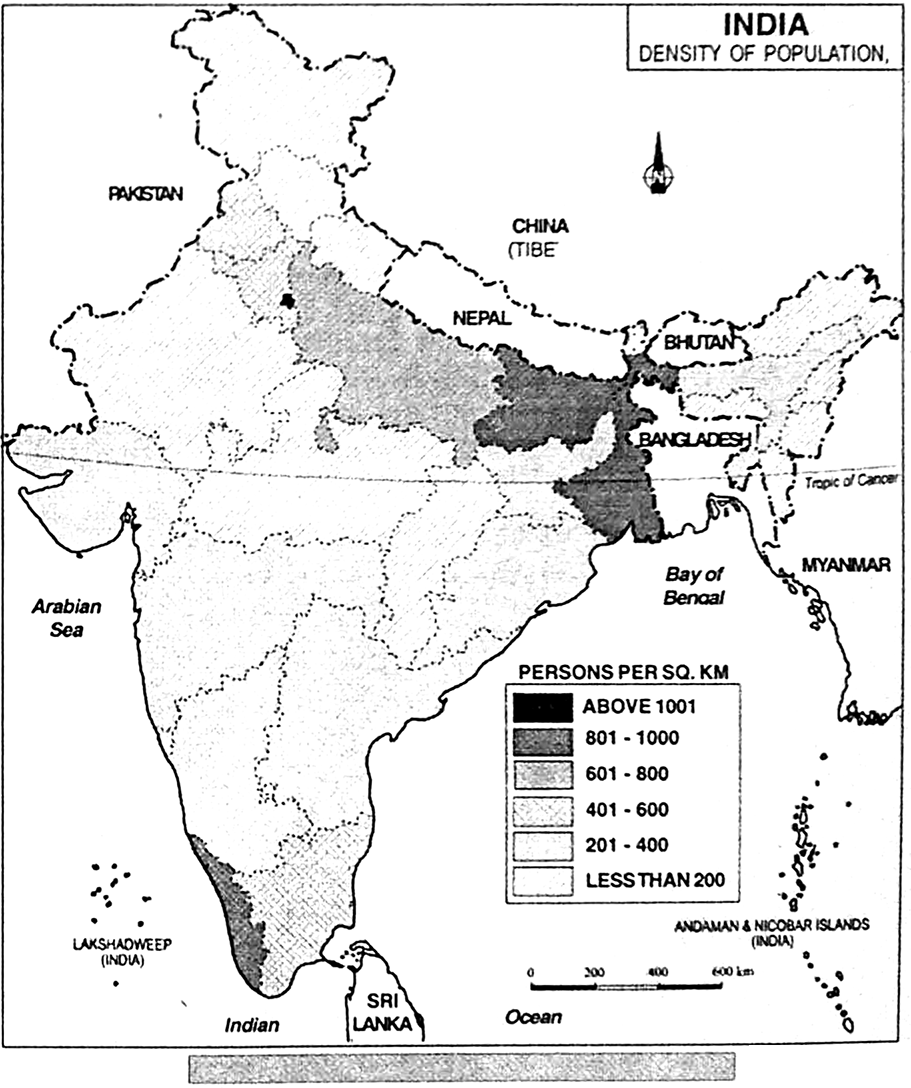Sponsor Area
Population - Distribution, Density, Growth And Composition
Discuss the spatial pattern of density of population in India.
The variation in population density is observed between states of India. Densities are low in the hilly states due to adverse environmental conditions. In Arunachal Pradesh the density of population is 13 persons/. sq km. In Sikkim it is 76, in Nagaland it is 120, in Mizoram 42 and 99 in western coastal regions.

The peninsular states have medium density of population except Kerala and Tamil Nadu. Maharashtra has 314 persons per sq. km, Orissa has 236 and Goa, Andhra Pradesh, Karnataka and Gujarat have 200 to 300 persons/sq. km.
The population density is less then 100 persons/sq. km. in Madhya Pradesh, Rajasthan, Uttaranchal, Chattisgarh, Nagaland, Himachal Pradesh, Manipur and Meghalaya.
Some More Questions From Population - Distribution, Density, Growth and Composition Chapter
Which states have large rural population in India? Give one reason for such large rural population.
Why do some states of India have higher rates of work participation than others?
‘The agricultural sector has the largest share of Indian workers’. Explain.
Discuss the spatial pattern of density of population in India.
Give an account of the occupational structure of India’s population.
Name any four most populous states of the country.
Describe physical factors as factor for distribution of population.
Describe some of the challenges for the society as far adolescents are concerned.
Define growth of population. Name its two component.
Describe the objectives of National Youth Policy launched by Government of India.
Sponsor Area
Mock Test Series
Mock Test Series





